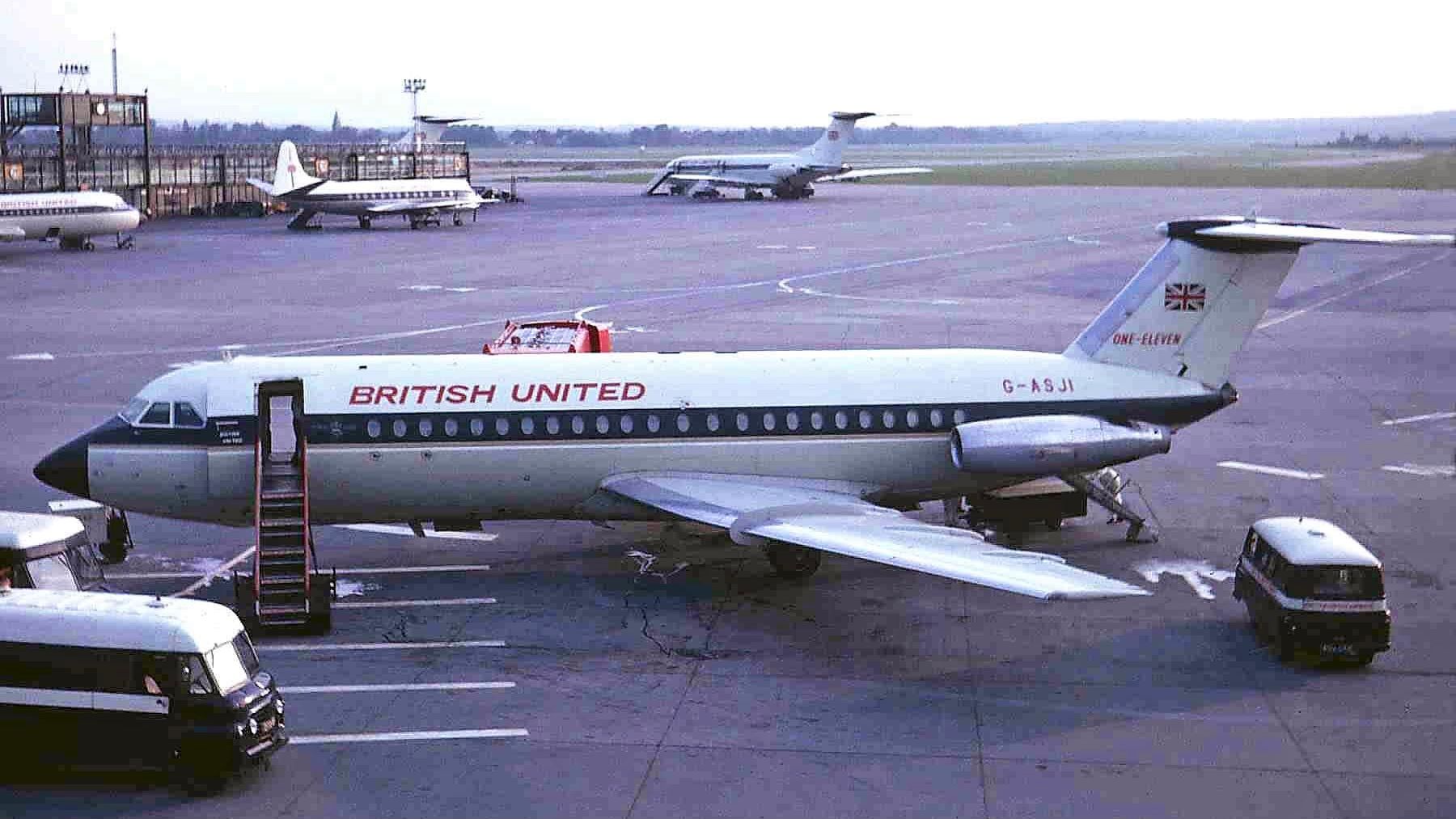The BAC 1-11 (sometimes stylized as the BAC One-Eleven) was a British short-range aircraft, which was first introduced in 1965 with British United Airways and was produced by the British Aircraft Corporation (BAC). The aircraft has since been retired by its operators as more fuel-efficient aircraft have become available.
The aircraft was produced in the United Kingdom from 1963 to 1982 and was subsequently manufactured in Romania from 1982 to 1989. In total, 244 of the aircraft were built, and the aircraft was used by both civilian and military operators.
Developmental phase
The BAC 1-11 was initially conceived by Hunting Aircraft, a British aircraft manufacturing company that specialized in light training aircraft. The company believed that there was a need for a new aircraft to be released as the demand for flights soared, but the supply of aircraft did not catch up quick enough.
The aircraft they were in the process of manufacturing was meant to fill a void in the short-haul jet aircraft market. Other manufacturers, such as Vickers Viscount and Sud Aviation Cavarelle, also attempted to develop an aircraft suitable to fill this gap in the industry.
However, Hunting Aircraft’s operations were consolidated with the operations of the BAC in 1960, thereby forming the BAC 1-11 project. Hunting’s original proposal called for a 30-seater aircraft, but following the merger with BAC, the project was augmented, resulting in the final product, an 80-seater jetliner. The new BAC held the view that the demand for a 30-seater plane would be insufficient, and hence increased the capacity first to 59 seats, and then to 80.
Looking at its operations
The BAC 1-11 was launched in 1961 when British United Airways (BUA) ordered 10 BAC 1-11 200s. This was then followed by Braniff International Airways’ order for six aircraft. The 1-11 was not designed to explicitly meet needs of the state-owned British European Airways (BEA) and British Overseas Airways Corporation (BOAC).
However, the former of these did ultimately end up flying 18 examples of the 1-11-500, according to data from ATDB.aero. Overall, BAC initially expected upwards of 400 orders, but that did not prove to be the case.
Even though the aircraft was not as successful as initially conceived, the BAC 1-11 was still ordered by many international airlines, including Kuwait Airways, Aer Lingus, Central African Airways and Western Airlines. Smaller airlines based in the United States were prohibited from ordering the jet by the Civil Aeronautics Board (CAB), in what experts called a protectionist act.
Military operators of the BAC 1-11 included the Australian Air Force, the Royal Air Force of Oman, the Royal Air Force of the U.K. and the Philippine Air Force. Several states, including the Romanian, Mexican, and Philippine governments, also operated the aircraft.
The variants
The initial production version of the aircraft was the BAC 1-11 200, and this variant was one of the more popular versions of the BAC 1-11. A total of 56 were built, and were operated by many civilian airlines.
Following the release of the BAC 1-11 200, British Aircraft Corporation decided to launch an updated version of the aircraft, which they named the BAC 1-11 300. This variant had upgraded engines and was designed with larger fuel tanks to allow for a longer range. The 300 was not particularly popular, but the 400, which added American instrumentation and equipment to the BAC 1-11 300, was the second most popular variant of the BAC 1-11, with 69 of the type built.
The most popular variant was the BAC 1-11 500, which had an extended fuselage capable of seating 119 passengers. The engines were also more powerful, and thus 86 were built.
Looking back at the era
The BAC 1-11 rivaled with the likes of the DC-9 as the jet age started to mature in the mid-1960s. The DC-9 performed its maiden flight in February 1965 and competed with jetliners across the continents well before the DC series would affirm itself as a staple in commercial jet aviation for decades to come. The DC-9 and BAC 1-11 had several similarities, including their T-tail, rear engine configuration, and passenger capacity.
The One-Eleven can be spotted on the ground at several museums around the world, even as far as the Museo Nacional Aeronáutico y del Espacio in Santiago, Chile. However, the United Kingdom remains the place with the most units. Brooklands Museum, the Imperial War Museum, the National Museum of Flight, and the Cornwall Aviation Heritage Centre all have the legendary type on display.
What are your thoughts about this aircraft’s history? What do you make of the plane’s overall journey over the years? Let us know what you think of its operations in the comment section.
Source: ATDB.aero



_JP6105232.jpg)
.jpg)